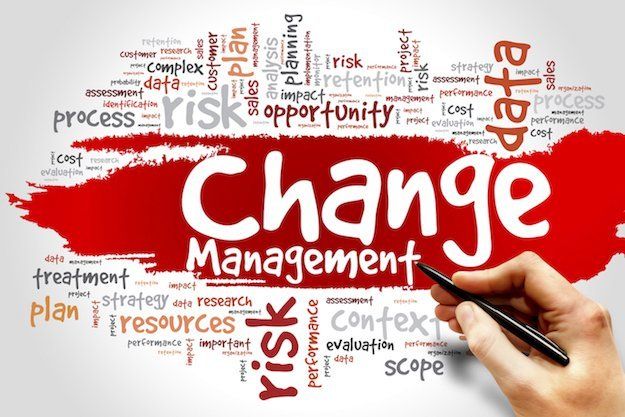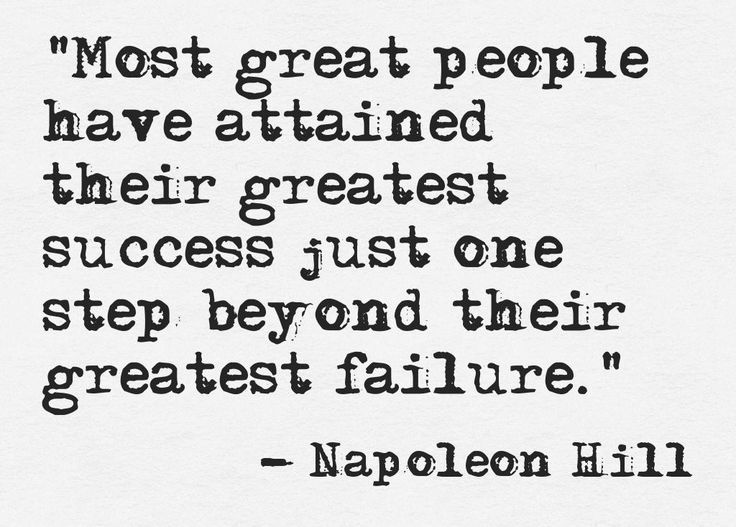The Many Benefits of Coaching Employees
Steve Nguyen, Ph.D. • June 22, 2017
“Coaching is helping another person reach higher levels of effectiveness by creating a dialogue that leads to awareness and action.” -Brian Emerson and Anne Loehr
“When an employee has the skills and ability to complete the task at hand, but for some reason is struggling with the confidence, focus, motivation, drive, or bandwidth to be at their best, coaching can help.” -Brian Emerson and Anne Loehr
In the classic coaching book, Coaching for Performance (2009), the late John Whitmore described numerous benefits of coaching. Included in the list are benefits to the recipient
(i.e., the client/coachee) as well as benefits to the team and the larger organization
(pp. 156-158):
- Improved performance and productivity
- Staff development
- Improved learning
- Improved relationships
- Improved quality of life for individuals
- More time for the manager
- More creative ideas
- Better use of people, skills, and resources
- Faster and more effective emergency response
- Greater flexibility and adaptability to change
- More motivated staff
- Culture change
- A life skill
In the book, Coaching People (McManus, 2006), benefits to the person being coached are (pp. 5-6):
- maximizing their individual strengths
- overcoming personal challenges/obstacles
- achieving new skills & competencies to become more effective
- preparing for new work/job roles or responsibilities
- improvement in managing themselves (e.g., better time management)
- clarifying and working toward goals (e.g., learning about and setting SMART goals)
- increasing their job satisfaction and motivation
Benefits to the team and organization include (McManus, 2006, p. 6):
- improving the working relationships between manager and direct reports (i.e., employees)
- developing & fostering more productive teams
- using organizational resources more effectively
Written By: Steve Nguyen, Ph.D.
Leadership Advisor & Talent Development Consultant
References
Emerson, B., & Loehr, A. (2008). A Manager’s Guide to Coaching: Simple and Effective Ways to Get the Best Out of Your Employees. New York: AMACOM.
McManus, P. (2006). Coaching People: Expert Solutions to Everyday Challenges. Boston: Harvard Business Press.
Whitmore, J. (2009). Coaching for Performance (4th ed.). London: Nicholas Brealey Publishing.

In the book, Extreme Ownership , Leif Babin (a U.S. Navy SEAL officer who was a SEAL instructor overseeing the Junior Officer Training Course in the Naval Special Warfare Training Center) shared a story about the performances of two boat crews during Hell Week. Boat Crew II (which dominated and had a strong leader) and Boat Crew VI (which came in last in almost every race and had an indifferent and inexperienced leader). A SEAL senior chief officer (one of the SEAL instructors) suggested that they swap out the boat crew leaders from the best and worst crews and see what happens. The turnaround was stunning: “ Boat Crew VI , the same team in the same circumstances only under new leadership, went from the worst boat crew in the class to the best ” (Willink & Babin, 2017, p. 48-49). As Babin wrote (Willink & Babin, 2017, p. 49): “How is it possible that switching a single individual—only the leader—had completely turned around the performance of an entire group? The answer: leadership is the single greatest factor in any team’s performance . Whether a team succeeds or fails is all up to the leader. The leader’s attitude sets the tone for the entire team. The leader drives performance—or doesn’t. And this applies not just to the most senior leader of an overall team, but to the junior leaders of teams within the team.” This is a classic example of the Pygmalion Effect. The APA Dictionary of Psychology (VandenBos, 2007) defines Pygmalion effect as: “a consequence or reaction in which the expectations of a leader or superior engender behavior from followers or subordinates that is consistent with these expectations: a form of self-fulfilling prophecy. For example, raising manager expectations of the performance of subordinate employees has been found to enhance the performance of those employees” (p. 868). “The idea here is that if an employee feels that a manager has confidence in him, his self-esteem will increase, as will his performance” (Aamodt, 2010, p. 330). Indeed, leaders often get the performance they expect from their employees. In a classic Harvard Business Review article (originally published in 1969, reprinted in 1988), Livingston wrote (1988, p. 122): What managers expect of subordinates and the way they treat them largely determine their performance and career progress. A unique characteristic of superior managers is the ability to create high performance expectations that subordinates fulfill. Less effective managers fail to develop similar expectations, and as a consequence, the productivity of their subordinates suffers. Subordinates, more often than not, appear to do what they believe they are expected to do. “[S]uperior managers have greater confidence than other managers in their own ability to develop the talents of their subordinates” (Livingston, 1988, p. 126). Superior managers don’t give up on themselves and they definitely do not give up easily on their subordinates (Livingston, 1988). “Managers not only shape the expectations and productivity of subordinates but also influence their attitudes toward their jobs and themselves. If managers are unskilled, they leave scars on the careers of young people, cut deeply into their self-esteem, and distort their image of themselves as human beings. But if they are skillful and have high expectations, subordinates’ self-confidence will grow, their capabilities will develop, and their productivity will be high” (Livingston, 1988, p. 130). Takeaway: Leadership is, singularly, the most crucial factor in a team’s performance. What managers expect of their subordinates and the way they treat them significantly determine their performance and career progress. Superior managers create high performance expectations that subordinates fulfill. The best managers have confidence in themselves and in their ability to develop the talents of their subordinates. Written By: Steve Nguyen, Ph.D. Leadership & Talent Development Consultant References Aamodt, M. G. (2010). Industrial/organizational psychology: An applied approach (6th ed.). Wadsworth. Livingston, J. S. (1969/1988). Pygmalion in management. Harvard Business Review, 66(5), 121-130. VandenBos, G. R. (Ed.). (2007). APA dictionary of psychology. American Psychological Association. Willink, J., & Babin, L. (2017). Extreme Ownership: How U.S. Navy SEALs Lead and Win. St. Martin’s Press.

Leaders exhibit common bad habits and researchers have pinpointed specific behaviors that can derail a person’s career (Lombardo & Eichinger, 2009). For two great coaching and development guides, consult FYI: For Your Improvement: A Development and Coaching Guide (Lombardo & Eichinger, 2009) and Compass: Your Guide for Leadership Development and Coaching (Scisco, Biech, & Hallenbeck, 2017). Lombardo and Eichinger (2009) define derailing behaviors as negative characteristics or flame-out factors that derail an individual’s career. According to the Center for Creative Leadership (Scisco, Biech, & Hallenbeck, 2017), “A derailed leader is one who, after having reached a level of success in the organization, is fired, demoted, or involuntarily reaches a career plateau. Before these managers derailed, their organizations saw them as having high potential for advancement, having an impressive track record of results, and holding an established leadership position. But then something happened.” Statistics about failure or inadequate success experienced by executives in new leadership positions (in the first 18 months) range from 38% to over 50% (Riddle, 2016). Here are three common leadership derailing behaviors I see in leaders in organizations: The overwhelming desire to always add their two cents (i.e., their unsolicited opinion) to every discussion (Goldsmith, 2007). Not listening (Goldsmith, 2007). Not taking extreme ownership (Willink & Babin, 2017) [Note: I’m including Goldsmith’s “Refusing to express regret” (inability to take responsibility or admit you’re wrong), “Making excuses” (stop making excuses), and Passing the buck” (blaming everyone but ourselves) under the not taking extreme ownership derailing behavior]. Always Adding Your Two Cents Marshall Goldsmith, a world-renowned executive coach, shared a story where he witnessed this very bad habit of “adding too much value” in action during dinner: “The two men at dinner were clearly on the same wavelength. One of them was Jon Katzenbach, the ex-McKinsey director who now heads his own elite consulting boutique. The other fellow was Niko Canner, his brilliant protégé and partner. They were plotting out a new venture. But something about their conversation was slightly off. Every time Niko floated an idea, Katzenbach interrupted him. “That’s a great idea,” he would say, “but it would work better if you . . .” and then he would trail off into a story about how it worked for him several years earlier in another context. When Jon finished, Niko would pick up where he left off only to be interrupted within seconds by Jon again. This went on back and forth like a long rally at Wimbledon” (Goldsmith, 2007, p. 48). “Imagine you’re the CEO. I come to you with an idea that you think is very good. Rather than just pat me on the back and say, “Great idea!” your inclination (because you have to add value) is to say, “Good idea, but it’d be better if you tried it this way.” The problem is, you may have improved the content of my idea by 5 percent, but you’ve reduced my commitment to executing it by 50 percent, because you’ve taken away my ownership of the idea. My idea is now your idea—and I walk out of your office less enthused about it than when I walked in. That’s the fallacy of added value. Whatever we gain in the form of a better idea is lost many times over in our employees’ diminished commitment to the concept” (Goldsmith, 2007, p. 48-49). Not Listening Lombardo and Eichinger (2009) wrote that people who are unskilled at listening tend to cut others off, try to finish other people’s sentences, and interrupt to make a pronouncement or render a solution or decision. As a result, those poor at listening do not learn much from their interactions with others. Goldsmith worked with a group of executives of one of the world’s most respected research and development organizations that had a problem retaining young talent. They had a very visible and annoying way to show that they weren’t listening. “During presentations everyone in senior management had developed the annoying habit of looking at their watches, motioning for junior scientists to move it along, and repeating over and over, “Next slide. Next slide.” . . . Have you ever tried to make a presentation while a manager grunted at you and kept telling you to move it along? Well, that’s how the junior scientists at this company felt” (Goldsmith, 2007, p. 87). Not Taking Extreme Ownership The best and most concise description of taking ownership is from the book, Extreme Ownership: How U.S. Navy SEALs Lead and Win (Willink & Babin, 2017): “On any team, in any organization, all responsibility for success and failure rests with the leader. The leader must own everything in his or her world. There is no one else to blame. The leader must acknowledge mistakes and admit failures, take ownership of them, and develop a plan to win. The best leaders don’t just take responsibility for their job. They take Extreme Ownership of everything that impacts their mission” (Willink & Babin, 2017, p. 30). “The irony, of course, is that all the fears that lead us to resist apologizing—the fear of losing, admitting we’re wrong, ceding control—are actually erased by an apology. When you say, “I’m sorry,” you turn people into your allies, even your partners” (Goldsmith, 2017, p. 84). “If we can stop excusing ourselves, we can get better at almost anything we choose” (Goldsmith, 2017, p. 79). “A leader who cannot shoulder the blame is not someone we will follow blindly into battle. We instinctively question that individual’s character, dependability, and loyalty to us. And so we hold back on our loyalty to him or her” (Goldsmith, 2017, p. 94). I love this quote: “Be humble to see your mistakes, courageous to admit them, and wise enough to correct them. The most difficult obstacles to remove are the ones that you create for yourself. If you cannot see your mistakes, you cannot fix them.” -Amine Ayad Written By: Steve Nguyen, Ph.D. Leadership Development Advisor & Consultant References Goldsmith, M. (2007). What Got You Here Won’t Get You There . Hyperion. Lombardo, M. M., & Eichinger, R. W. (2009). FYI: For your improvement: A development and coaching guide (5th ed.). Lominger International. Riddle, D. (2016). Executive Integration: Equipping Transitioning Leaders for Success . Retrieved from https://www.ccl.org/wp-content/uploads/2015/04/ExecutiveIntegration.pdf Scisco, P., Biech, E., & Hallenbeck, G. (2017). Compass: Your Guide for Leadership Development and Coaching . Center for Creative Leadership Press. Willink, J., & Babin, L. (2017). Extreme Ownership: How U.S. Navy SEALs Lead and Win . St. Martin’s Press.

“Coaching is unlocking people’s potential to maximize their own performance. It is helping them to learn rather than teaching them.” -Sir John Whitmore Business coaching is enhancing a client’s (person in a business) awareness and behavior in order to achieve business objectives for both client and organization (WABC, 2018). After years of researching business coaching models, I returned (much to my surprise) to the original G.R.O.W. coaching model. John Whitmore, Graham Alexander, and Alan Fine all worked together and, in the mid- to late-1980, they co-developed the G.R.O.W. Model (Fine, 2018). Shortly after, the three went their separate ways, each one using his own approach to/version of the G.R.O.W. Model. For all major iterations of the G.R.O.W. Model, the first three letters are the same: “G” is the “Goal” the individual seeks to achieve; “R” is the “Realities” a person should consider in the context of the decision process; and “O” is the “Options” open to the decision maker (Fine, 2018). It is only the last letter, “W”, that has been interpreted differently. John Whitmore defined it as “Will” (Whitmore, 2009), Graham Alexander defined it as “Wrap-up” (Alexander & Renshaw, 2005), although he also used “Wrap-up/way forward” (Alexander, 2006), and Alan Fine defined it as “Way Forward” (Fine, 2010). G.R.O.W. (Goal, Reality, Options, Way Forward) is a simple 4-step process. The coach helps the coachee (person being coached) articulate a concise goal (Goal). Next, the coachee describes his current situation (Reality). This is followed by brainstorming options (Options) and next steps. Finally, the coachee identifies and selects one or more options to use in an action plan (Way Forward). When looking at a coaching model, I asked three questions: (1) Is the model easy to use to coach clients? (2) Can I use the model to teach leaders so they can use it to coach their employees? (3) Does the model allow for a rapid coaching process that can be done in one or two sessions? In the end, I selected the G.R.O.W. Model (in particular, Alan Fine’s version) because it addressed all three questions. Alan Fine’s G.R.O.W. Model [covered in his book, You Already Know How to Be Great (2010)] has 3 to 6 questions for each step in the sequence. I used Fine’s G.R.O.W. Model to coach a new leader in two sessions (1 hour the first session, 1.5 hours the second session), plus one debriefing session (30 minutes). The coaching experience with this leader confirmed several things. First, Alan Fine’s G.R.O.W. model is very easy to use. Second, Fine’s G.R.O.W. model can be used to teach a leader, so s/he can turn around and use it to coach his/her employees. Third, the entire process is surprisingly brief, lasting just 2.5 sessions. Within that time frame, I was able to work with the leader to: clarify his goal for the session (Goal); describe his current situation (Reality); explore potential actions and next steps (Options); and identify a specific action as his next step (Way Forward) — demonstrating that, as a business coaching model and process, the GROW Model is very simple to use and understand (for both coach & coachee), effective yet brief, practical, and able to be delivered on demand and even as a self-coaching process (coaching yourself). Clients answer a group of questions for each of the steps of the G.R.O.W. Model. Step #1 is Goal, Step #2 is Reality, Step #3 is Options, and Step #4 is Way Forward. The coach and coachee go through the steps and the questions that fall under each step in order, starting with Step #1. It’s important to not introduce clients to all the GROW questions at once because it can cause them to answer the questions in a cursory manner, rushing through their responses instead of really thinking about the question and allowing themselves time to process each question and formulate a response. Although it’s recommended that you follow each of the GROW steps sequentially, starting with Step 1: Goal and ending with Step 4: Way Forward, in practice, there may be times where you have to adjust. John Whitmore explained this in his book, Coaching for Performance (2009): “[O]ne may only be able to define a vague goal until one has examined the reality in some detail. It will then be necessary to go back and define the goal much more precisely before moving forward again. Even a sharply defined initial goal may be recognized to be wrong or inappropriate once the reality is clear” (pp. 56-57). For example, for my client, the overall goal for the session (Step #1 Goal) finally solidified in the middle of Step #2 (Reality). For this client, the topic did not become clear until after he’s had a chance to talk about what was currently happening at work and what he had tried so far. So, even though he responded to a question in Step 2, it actually made more sense to place his response in Step 1, to a question about the topic/goal of the discussion. Remember, it’s okay to be flexible and make adjustments to help clients make sense of the GROW framework. To verify, I asked my client if there was anything that did not make sense or that did not match up with what he wanted to say. A unique question in Fine’s G.R.O.W. Model that stands out and one that I like is a question in Step #3 Options phase (“Would you like suggestions from me?”). A word of caution: If this question is not handled properly, the coach can very easily end up doling out advice and completely derail the purpose of coaching. What I like about this question is that it allows the coach an opportunity to share some suggestions and then check in to see if any of the suggestions seems interesting enough to explore further. This can be invaluable, especially when clients are at their wits’ end and no amount of open-ended questions will help to stimulate their creative ideas. In my coaching session, because of my rapport with this new leader and thanks to a previously administered personality assessment, I knew that my real contribution to him would be to offer some practical suggestions. The client told me that my suggestions were “all spot on” and that he agreed with them. In our debriefing session, this leader stated that he likes that the GROW process is compact, simple, and straightforward and that these characteristics of GROW will help when he introduces his team to it. He especially appreciated my explanation of the GROW Model as a decision framework and said, “decision framework feels very liberating,” unlike the term “goal setting” which is becoming stale. Here’s an interesting tidbit — the G.R.O.W. framework also happens to be “one of the tools Google uses to teach [its] managers about coaching conversations” (re:Work with Google: Coach with the GROW model). Takeaway: Overall, the G.R.O.W. Model (in particular, Alan Fine’s version) is a very capable business coaching model. From my own vetting process, it meets all three of the criteria on my list: (1) The G.R.O.W. Model is very easy to use to coach others; (2) The G.R.O.W. Model is remarkably simple and can be effectively used to teach a leader so s/he can use it to coach his/her own employees; and (3) The G.R.O.W. Model is powerful, yet concise enough that it can be completed in one or two coaching sessions. Written By: Steve Nguyen, Ph.D. Leadership + Talent Development Advisor References Alexander, G. (2006). Behavioural coaching — the GROW model. In J. Passmore (Ed.), Excellence in coaching: The industry guide (2nd ed., pp. 83-93). London: Kogan Page. Alexander, G., & Renshaw, B. (2005). SuperCoaching: The Missing Ingredient for High Performance . London, UK: Random House. Fine, A. (2010). You Already Know How to Be Great: A Simple Way to Remove Interference and Unlock Your Greatest Potential . New York: Penguin Group. Fine, A. (2018). What is the GROW Model. InsideOut Development. https://www.insideoutdev.com/about-us/what-is-the-grow-model/ re:Work with Google. (2018). Coach with the GROW model. https://rework.withgoogle.com/guides/managers-coach-managers-to-coach/steps/coach-with-the-grow-mode... Whitmore, J. (2009). Coaching for Performance (4th ed.). London: Nicholas Brealey Publishing. Worldwide Association of Business Coaches (WABC) (2018). Business Coaching Definition. https://www.wabccoaches.com/includes/popups/definition.html

In a previous life and time, I worked as a mental health counselor. I was trained in the art of listening and would periodically have my listening skills evaluated by professors, supervisors, and even peers (on videos and in live sessions). It was stressful and sometimes I felt more like the patient/client than the therapist. After pivoting from the mental health field to the corporate world, I was naïve enough to think that I would no longer need to tap into my counseling skills. Today, more than a decade after leaving my counseling life behind and much to my surprise and delight, I continue to find my counseling skills useful when interacting with people. In particular, I’m seeing many areas in the business arena that are in desperate need of the skills of a counselor. Talk First, Ramble On Second, and (Maybe) Listen Third It is incredible to me how quick business people are to talk before hearing what the other person has to say. Let me share one example: I had scheduled a meeting about a project and prior to the meeting, had sent out an email outlining the purpose of the meeting as well as the limited parameters within which we had to work. Once the meeting started, a woman began suggesting ideas on how to improve things. They were fantastic ideas. The only problem was that these great ideas were not applicable to the project nor were they aligned with the reason for the meeting. Had she listened to what I was explaining at the start of the meeting — the presentation is limited to one hour so we are limited by what we can do — then she would not have wasted her time talking and everyone else’s time listening to her go on and on. The business environment demands that a person speaks up in order to be noticed and, sadly, many are too quick to talk rather than listen to another person talk. It’s as if talking first and fast is somehow a sport and the first one to speak wins. Given this context, we can see that listening achieves the exact opposite effect (i.e., listening means not talking much and not drawing attention to yourself because you’re not talking). Lombardo and Eichinger (2009) observe that people who are unskilled in listening tend to cut others off or try to finish other people’s sentences. They’ll interrupt as someone is talking to try to force their point across. Because they’re too busy trying to think about their own responses, it’s easy to see that they’re actually not listening. As a result, others form opinions about the person not listening, such as he’s arrogant, or doesn’t care, or does not value others. Perhaps they might think this person is too busy, has selective hearing, or is just impatient or insensitive. One of the dangers of talking too much and not listening is that you’ll completely miss the point that the other person is trying to make, and even worse, when you restate or relate the conversation (if you can even call it that), you’ll restate it incorrectly because, not surprisingly, you weren’t listening and got the facts and important points all wrong! Active Listening In The First-Time Manager , Belker, McCormick, and Topchik (2012) said the ability to actively listen is one of the best-kept secrets of successful management. Active listeners “encourage the other person to talk” (Belker, McCormick, & Topchik, 2012, p. 25) and “continue the other person’s line of communication” (p. 26). We know when a person is truly engaged in conversation with us – they’ll look at us when we talk, they will occasionally nod their heads and smile, and they’ll use statements or comments to let us know they’re interested (e.g., that’s interesting; tell me more; why do you think he said that, etc.) and, finally, they’ll restate or rephrase what we just said (e.g., “So let me see if I understand what you just said [then add the rephrase version]. Is that right?” (Belker, McCormick, & Topchik, 2012) Here’s a great piece of advice: “[Y]ou don’t want to dominate the conversation . . . Rather, you want to create a dialogue in which you speak only about one-fifth of the time” (Stone, 2007, p. 77). One important caution about active listening is that if your only goal is to check off the list of active listening how-tos (i.e., maintain eye contact, nod your head, paraphrase) then even active listening can become mechanical . You MUST concentrate on listening, not just demonstrate that you are (Nichols, 2009). Takeaway (from The First-Time Manager ): “Active listening is one of the most valuable traits [you] can demonstrate for two important reasons: First, if you do a great deal of active listening, you will not be thought of as a know-it-all, which is how most people perceive someone who talks too much. Second, by doing a lot of active listening and less talking, you’ll learn what is going on and gain insights and information you would miss if you were doing all the talking” (Belker, McCormick, & Topchik, 2012, p. 24). Written By: Steve Nguyen, Ph.D. Leadership + Talent Development Advisor References Belker, L. B., McCormick, J., & Topchik, G. S. (2012). The first-time manager (6th ed.). Washington, DC: AMACOM. Lombardo, M. M., & Eichinger, R. W. (2009). FYI: For your improvement: A development and coaching guide (5th ed.). Minneapolis, MN: Lominger International. Nichols, M. P. (2009). The lost art of listening: How learning to listen can improve relationships (2nd ed.). New York, NY: Guilford Press. Stone, F. M. (2007). Coaching, counseling & mentoring: How to choose & use the right technique to boost employee performance (2nd ed.). Washington, DC: AMACOM.

“The difficulty in mastering change lies in the fact that we can’t “program” ourselves to adjust. Human beings are complex and emotional, and some of the stress of change comes from a gap between what we want to feel and do, and what we actually feel. The gap will not go away by ignoring it, but it can be easier to take by recognizing and facing up to one’s real difficulty with change.” —Dennis Jaffe & Cynthia Scott In the Pocket Mentor book, “Managing Change,” Harvard Business School professor Linda Hill (2009) shared reasons for people’s reactions to organizational change. Dr. Hill listed nine reasons why people resist change and six reasons why people support change. Nine Reasons Why People Resist Change (Hill, 2009, p. 47): They believe the change is unnecessary or will make things worse. They don’t trust the people leading the change effort. They don’t like the way the change was introduced. They are not confident the change will succeed. They did not have any input or in planning and implementing the change effort. They feel that change will mean personal loss — of security, money, status, or friends. They believe in the status quo. They’ve already experienced a lot of change and can’t handle any more disruption. They’re afraid they don’t have the skills to do their work in new ways required by the change. Six Reasons Why People Support Change (Hill, 2009, p. 47): They believe the change makes sense and that it is the right course of action. They respect the people leading the change effort. They anticipate new opportunities and challenges that come from the change. They were involved in planning and implementing the change effort. They believe the change will lead to personal gain. They like and enjoy the excitement of change. Written By: Steve Nguyen, Ph.D. Leadership Advisor & Talent Development Consultant References Hill, L. A. (2009). Managing change: Pocket mentor . Boston, MA: Harvard Business School Publishing. Jaffe, D. T., & Scott, C. D. (2003). Mastering the Change Curve: Theoretical background (2nd edition). West Chester, PA: HRDQ. Retrieved from http://www.traininglocation.com/mastering-change-curve-theory.pdf

In the 2010 movie Robin Hood, a young, naïve King John (played by Oscar Isaac) had one of the funniest lines pertaining to leadership I’ve ever heard in a movie. With absolutely no leadership or battle experience, and only after the troops had already been rallied to go to war by someone else (the real leader), the young king foolhardily proclaimed, “This is my first time, I’ll lead!” and takes off on horseback all by himself. It is essential for a leader to build credibility. According to Hughes, Ginnett, and Curphy (2012), there are two components of credibility: (a) Building expertise, and (b) Building trust. Kouzes and Posner (2007) said, “Above all else, we as constituents must be able to believe in our leaders. We must believe that their word can be trusted, that they’re personally passionate and enthusiastic about the work that they’re doing, and that they have the knowledge and skill to lead” (p. 37). Trust can be viewed as being made up of two things: the ability to clarify and communicate values to others, and the ability to establish, maintain, and strengthen relationships with others (Hughes, Ginnett, & Curphy, 2012). The young, inexperienced king in the movie had not forged strong relationships with his men. He did not know them, and they certainly did not know anything about him, other than his birthright as king. Kouzes and Posner said in order to rally others, the leader must enable others to act by building solid trust and strong relationships. In addition to an absence of a relationship with the king, the men also had no confidence that this untested, unproven king knew what he was leading them into or where he was leading them toward. Followers need to believe that a leader knows where he’s taking them and that he is forward-looking and has a vision for the future (Kouzes & Posner, 2007). There’s a very important lesson and reminder about leadership from this movie — leadership is not a birthright nor is it reserved only for a few chosen people. “Leadership is not a gene and it’s not an inheritance. Leadership is an identifiable set of skills and abilities that are available to all of us. . . . [T]he theory that there are only a few great men and women who can lead others to greatness is just plain wrong. . . . [Great leaders] are the everyday heroes of our world. It’s because there are so many—not so few—leaders that extraordinary things get done on a regular basis, especially in extraordinary times” (Kouzes & Posner, 2007, p. 23). Takeaway About Leadership: “Leadership is not about position or title. Leadership is not about organizational power or authority. It’s not about celebrity or wealth. It’s not about the family you are born into. It’s not about being a CEO, president, general, or prime minister. And it’s definitely not about being a hero. Leadership is about relationships, about credibility, and about what you do” (Kouzes & Posner, 2007, p. 338.) Written By: Steve Nguyen, Ph.D. Leadership Advisor & Talent Development Consultant References Hughes, R. L., Ginnett, R. C., & Curphy, G. J. (2012). Leadership: Enhancing the lessons of experience (7th ed.). New York: McGraw-Hill/Irwin. Kouzes, J. M., & Posner, B. Z. (2007). The Leadership Challenge (4th ed.). San Francisco, CA: Jossey-Bass. Robin Hood (2010). The Internet Movie Database. http://www.imdb.com/title/tt0955308

University of Texas at Austin 2014 Commencement Address - Admiral William H. McRaven Watch his speech above or directly on YouTube, https://youtu.be/pxBQLFLei70 An inspiring and powerful 20-minute commencement speech by Naval Admiral William H. McRaven, ninth commander of U.S. Special Operations Command, at the University-wide Commencement at The University of Texas at Austin on May 17, 2014. Admiral McRaven’s commencement speech is perhaps one of the best commencement speeches I have ever heard. It is on point and offers some fantastic life and business lessons. Below are excerpts from his amazing speech. 10 Life Lessons from Basic SEAL Training 1. If you want to change the world, start off by making your bed. “If you can’t do the little things right, you will never do the big things right.” 2. If you want to change the world, find someone to help you paddle. “You can’t change the world alone—you will need some help— and to truly get from your starting point to your destination takes friends, colleagues, the good will of strangers and a strong coxswain to guide them.” 3. If you want to change the world, measure a person by the size of their heart, not the size of their flippers. “SEAL training was a great equalizer. Nothing mattered but your will to succeed. Not your color, not your ethnic background, not your education and not your social status.” 4. If you want to change the world get over being a sugar cookie and keep moving forward. “Sometimes no matter how well you prepare or how well you perform you still end up as a sugar cookie.” “For failing the uniform inspection, the student [in Basic SEAL training] had to run, fully clothed into the surfzone and then, wet from head to toe, roll around on the beach until every part of your body was covered with sand. The effect was known as a ‘sugar cookie.’ You stayed in that uniform the rest of the day — cold, wet and sandy.” “There were many a student who just couldn’t accept the fact that all their effort was in vain. . . Those students didn’t understand the purpose of the drill. You were never going to succeed. You were never going to have a perfect uniform.” 5. If you want to change the world, don’t be afraid of the circuses. “Every day during training you were challenged with multiple physical events — long runs, long swims, obstacle courses, hours of calisthenics — something designed to test your mettle. Every event had standards — times you had to meet. If you failed to meet those standards your name was posted on a list, and at the end of the day those on the list were invited to a ‘circus.’ A circus was two hours of additional calisthenics designed to wear you down, to break your spirit, to force you to quit.” “Life is filled with circuses. You will fail. You will likely fail often. It will be painful. It will be discouraging. At times it will test you to your very core.” 6. If you want to change the world sometimes you have to slide down the obstacle head first. 7. If you want to change the world, don’t back down from the sharks. “There are a lot of sharks in the world. If you hope to complete the swim you will have to deal with them.” 8. If you want to change the world, you must be your very best in the darkest moment. “At the darkest moment of the mission is the time when you must be calm, composed—when all your tactical skills, your physical power and all your inner strength must be brought to bear.” 9. If you want to change the world, start singing when you’re up to your neck in mud. “If I have learned anything in my time traveling the world, it is the power of hope. The power of one person—Washington, Lincoln, King, Mandela and even a young girl from Pakistan, Malala—one person can change the world by giving people hope.” 10. If you want to change the world don’t ever, ever ring the bell. “In SEAL training there is a bell. A brass bell that hangs in the center of the compound for all the students to see. All you have to do to quit—is ring the bell. Ring the bell and you no longer have to wake up at 5 o’clock. Ring the bell and you no longer have to do the freezing cold swims. Ring the bell and you no longer have to do the runs, the obstacle course, the PT—and you no longer have to endure the hardships of training. Just ring the bell. If you want to change the world don’t ever, ever ring the bell.” ------ “Start each day with a task completed. Find someone to help you through life. Respect everyone. Know that life is not fair and that you will fail often. But if you take some risks, step up when the times are toughest, face down the bullies, lift up the downtrodden and never, ever give up — if you do these things, then the next generation and the generations that follow will live in a world far better than the one we have today.” “It matters not your gender, your ethnic or religious background, your orientation, or your social status. Our struggles in this world are similar and the lessons to overcome those struggles and to move forward—changing ourselves and the world around us—will apply equally to all.” “Changing the world can happen anywhere and anyone can do it.” Written By: Steve Nguyen, Ph.D. Leadership Advisor & Talent Development Consultant Link University of Texas at Austin - Adm. McRaven Urges Graduates to Find Courage to Change the World https://news.utexas.edu/2014/05/16/mcraven-urges-graduates-to-find-courage-to-change-the-world

“Failure is not fatal. Failure should be our teacher, not our undertaker. It should challenge us to new heights of accomplishments, not pull us to new depths of despair. From honest failure can come valuable experience.” -William Arthur Ward, American author and teacher We prize success over failure. You see articles and book titles with the words “success” or “succeed” splattered on bookstore shelves. However, research shows that when it comes to learning, failure may just be good for us after all. In fact, failure is a better teacher than success. Madsen and Desai (2010) discovered that the knowledge gained from our failures lasts longer than those from our successes. They advise organizations, to neither ignore nor dismiss failure but to, treat failure as a learning opportunity. To illustrate the point, they used the flights of the 2002 space shuttle Atlantis and 2003 space shuttle Columbia. During the 2002 Atlantis flight, a piece of insulation broke off and damaged the left solid rocket booster but did not impede the mission or the program. However, there was little follow-up or investigation. During the launching of the space shuttle Columbia in 2003, another piece of insulation broke off and struck the leading edge of Columbia’s left wing. When Columbia reentered the earth’s atmosphere after a 16-day mission, “damage sustained from the foam’s impact compromised the orbiter’s thermal protection system, leading to the failure of the left wing and to the eventual disintegration of the orbiter” (Madsen & Desai, 2010, p. 451). Tragically, all seven astronauts on board were killed. The Columbia disaster resulted in the suspension of shuttle flights and led to a major investigation resulting in 29 recommended changes to prevent future disasters. The point is that, while we should not fail on purpose, failure while sometimes tragic is an important teacher. For organizations, the advice is this: study your small failures and close calls to extract useful information instead of waiting for a major catastrophe. “Organizational leaders should neither ignore failures nor stigmatize those involved with them; rather, leaders should treat failures as invaluable learning opportunities, encouraging the open sharing of information about them” (Madsen & Desai, 2010, p. 471). Written By: Steve Nguyen, Ph.D. Leadership Advisor & Talent Development Consultant Reference Madsen, P. M., & Desai, V. M. (2010). Failing to learn? The effects of failure and success on organizational learning in the global orbital launch vehicle industry. Academy of Management Journal, 53(3), 451-476.

